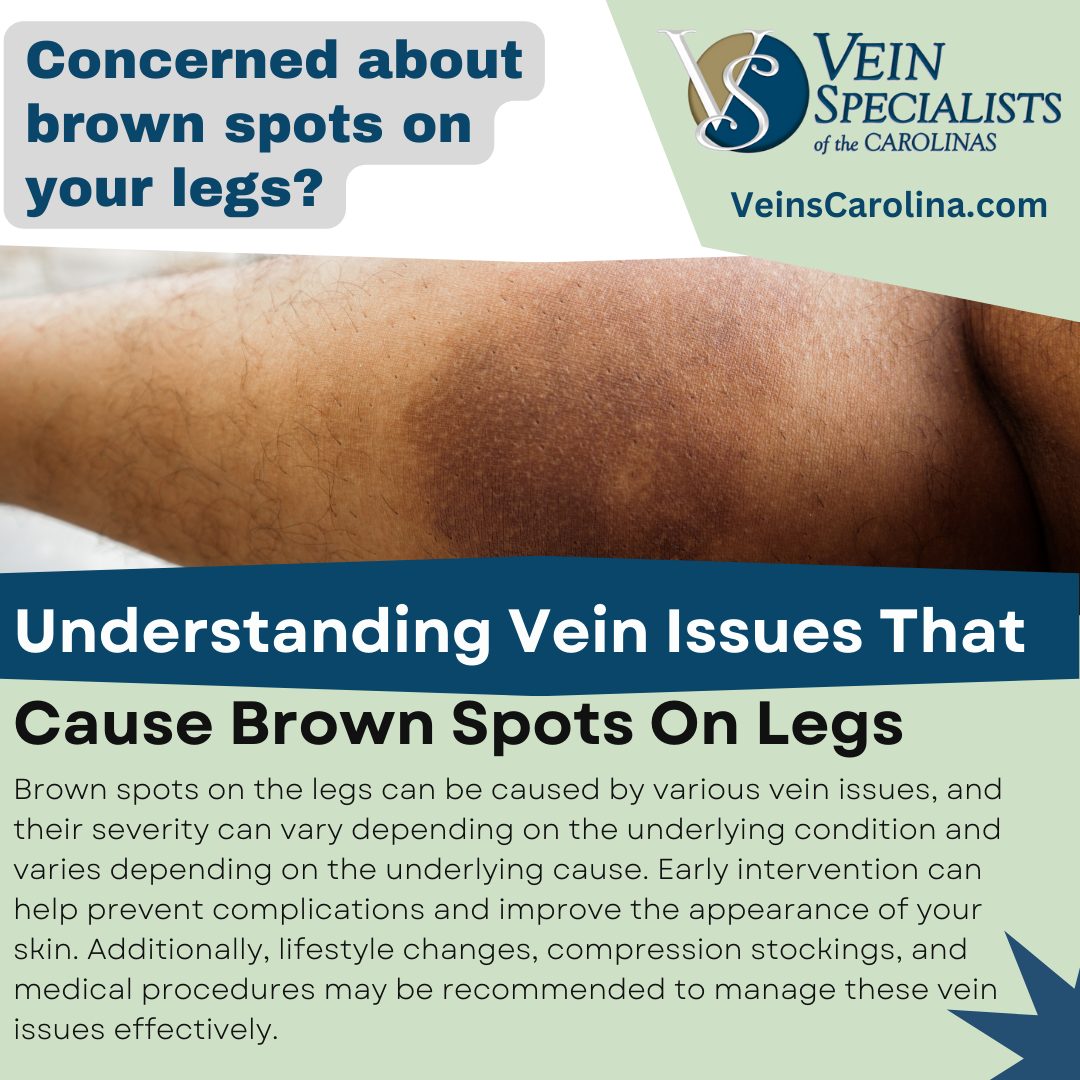Brown spots on the legs can be caused by various vein issues, and their severity can vary depending on the underlying condition.
Here are some of the common vein issues that can lead to brown spots on the legs and an overview of their severity:
1. Varicose Veins:
-
- Cause: Varicose veins are enlarged, twisted veins that usually occur in the legs. They develop when the valves in the veins become weak or damaged, causing blood to pool in the veins and leading to discoloration of the skin over time.
- Severity: Brown spots associated with varicose veins are often a cosmetic concern, but they can also indicate more serious underlying issues. If left untreated, varicose veins can lead to symptoms like pain, swelling, and skin changes. In severe cases, they can result in venous ulcers.
2. Spider Veins:
-
- Cause: Spider veins are smaller, dilated blood vessels that are typically red, blue, or purple. Over time, they can cause brown spots on the skin.
- Severity: Spider veins are usually a cosmetic issue and rarely cause discomfort. However, they can sometimes be a sign of underlying venous insufficiency.
3. Chronic Venous Insufficiency (CVI):
-
- Cause: CVI occurs when the veins in the legs are unable to pump blood effectively back to the heart. This can lead to swelling, skin changes, and brown spots.
- Severity: Brown spots due to CVI are often a sign of a more significant problem. If left untreated, CVI can progress to venous stasis ulcers, which are painful and slow-healing open sores on the legs.
4. Deep Vein Thrombosis (DVT):
-
- Cause: DVT is a blood clot that forms in a deep vein, usually in the leg. Brown spots on the skin can develop if a clot damages the veins and affects blood flow.
- Severity: DVT is a serious medical condition. Brown spots may be one of several symptoms, along with pain, swelling, and warmth in the affected leg. If not treated promptly, DVT can lead to life-threatening complications like pulmonary embolism.
5. Superficial Thrombophlebitis:
-
- Cause: This condition occurs when a superficial vein becomes inflamed and may develop clots, affecting the skin’s appearance.
- Severity: Superficial thrombophlebitis is usually a less severe condition than DVT, but it can still cause discomfort and skin changes. It is generally treated to prevent complications.
If you notice brown spots on your legs, it’s essential to consult a healthcare professional for a proper diagnosis and treatment plan. The severity of the issue varies depending on the underlying cause, and early intervention can help prevent complications and improve the appearance of your skin. Additionally, lifestyle changes, compression stockings, and medical procedures may be recommended to manage these vein issues effectively.
At Vein Specialists of the Carolinas we have in-depth expertise in diagnosing and treating vein-related conditions, as well as access to specialized tools and procedures.
Schedule your appointment to have a specialized treatment plan prescribed based on your personal vein health.
“All We Do Is Veins, All Day Every Day.”
#VeinHealth #BrownSpots #VaricoseVeins #SpiderVeins #CVI #ChronicVenousInsufficiency #DVT #DeepVeinThrombosis #VascularHealth #LegHealth #VascularDisease #VascularSpecialist #SkinChanges #VascularTreatment #LegVeins #MedicalAdvice #VascularAwareness #VeinIssues #HealthcareEducation #SkinDiscoloration #VeinCare #LegPain

